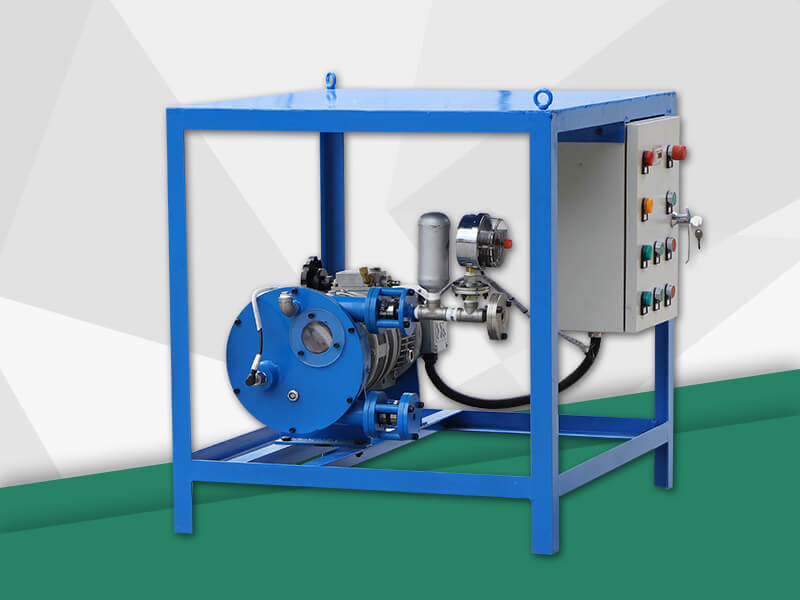Industrial hose pumps are peristaltic pumps and are a type of rotary positive displacement pumps. They are named because they work similarly to the gastrointestinal tract to transport gas, solid and liquid three-phase media. Its structure is mainly composed of a pump casing, a rotor body, a reducer, a base, and a hose. The working principle is that when the motor drives the center frame to rotate through the reducer, the squeeze wheel on the center frame runs along the hose. Rotating, the squeezing tube generated by the squeezing force between the roller and the pump body will flatten the squeezing tube. Then, the tube will return to its original state by its own elasticity, suck the material through the generated vacuum, and then squeeze the material under the squeezing effect of the roller. Squeeze it out so that it sucks and discharges the material repeatedly for work.
Industrial hose pump is a new type of fluid conveying equipment. It is used for pumping fluids in various industries, especially in some corrosive industries, such as chemical, pharmaceutical and biological industries, ceramic industry, water Processing industry, food and beverage industry, printing and packaging industry, mining and smelting industry, petroleum industry, paper industry, construction industry, cement slurry transportation, nuclear waste, electrolytic waste industry, beer and other industries; pumps and fluids will not be affected during work. Fouling is ideal for pumping mud, viscous, shear-sensitive and aggressive fluids.
Industrial hose pump has simple structure, long life, easy installation, no valve, low cost in later use, and can prevent backflow and siphon. Whether it is sensitive fluid, abrasive fluid, or disinfected and polluted fluid, this new and popular industrial pump can be used. Hose pumps are being accepted by more and more users.
The core component of the industrial hose pump is the hose, and its life directly affects the user's input cost. Therefore, the design of the hose pump is mainly based on increasing the hose life. What are the factors that affect the premature failure of the hose? There are two aspects to the summary: first, normal failure, that is, fatigue failure and friction and wear; second, abnormal failure, that is, tear damage and sudden blasting; among which the influential factors we can avoid or slow down are: selection Appropriate shape, quantity, diameter, rotation speed, and center of rotation of the extruding wheel; therefore, provide manufacturers with more comprehensive relevant parameters when purchasing hose pumps, such as working pressure, rated displacement, and temperature of conveyed materials. , Viscosity, corrosivity, particle size and other parameters, so that manufacturers can produce more suitable pumps.










